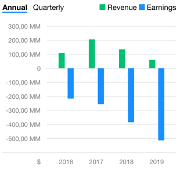From biotech to Big Pharma?
Moderna Biotech wants to maintain its independence in the pharmacological world.
By Dominique Jacquet

We have already mentioned the strategic nature and the complexity of the so-called ‘make or buy?’ decision, which consists of manufacturing vs. subcontracting.
In the case of biotechnology companies, it would seem that the question does not arise, because these companies develop drugs to carry them in phase 1 or 2, often with the financial support of the large pharmaceutical companies, then are bought by these same firms if successful.
This was the case with Pharmasset, acquired by Gilead in 2012 and which was the subject of our vidcast in May.
In complete contradiction with this observation, Moderna has the clear ambition of retaining its independence, eventually developing its own manufacturing footprint.
‘mRNA, the software of life’
Jacques Monod and François Jacob received the Nobel Prize for Medicine in 1965 by emitting and developing the concept of messenger RNA which allows, by simplifying (see Wikipedia for technical explanations!), the cell to regulate the expression of different proteins including she needs. This is genetic coding, hence the expression used by Moderna, the software of life.
The company is developing vaccines based on this technology and is very advanced in the development of a vaccine against COVID-19, which obviously places it at the heart of media and financial activity.
Founded in 2010, Moderna entered Nasdaq in 2018 under the symbol MRNA, its trademark, and the first months of its listing showed ups and downs around Nasdaq index.
The following graph shows the evolution of the firm’s revenues and profits over 4 years. Having no FDA approval (yet), revenues consist only of advances from partnerships signed with large pharmaceutical companies.

Source Yahoo Finance
At the end of February 2020, it achieved a cumulative performance identical to its benchmark with a price of $ 18.6, then began an exceptional stock market rally which brought it to $ 86 on May 18 due to very promising announcements on the development of the vaccine against novel coronavirus. So, the firm, although having cash of nearly 1.7 billion US dollars (source: Q1 2020), issues new shares at a price of $ 76 to raise 1.25 billion dollars bringing its cash to about 3 billion. The announced objective is not to finance research, which consumes 500 million dollars per year, but to actually build an industrial footprint which, in complement with an industrial partnership agreement with the Swiss company Lonza, will make it possible to produce, according to the words of its CEO Stéphane Bancel, up to a billion doses per year.
The first production batches will be launched by Lonza in July 2020, while (announcement of June 11) the phase 3 study (in fast track) with 30,000 subjects will only start this same month … This represents a ‘significant’ industrial risk and shows considerable confidence on the part of the various players in the scientific and industrial success of the project.
On May 27, the price fell sharply and closed at $ 51… before rising to $ 62 on June 12. The (near) future will tell us if we are observing an occurrence, among others, of an emotional stock market boom or the birth of an important player in the pharmaceutical world with the arrival of a new CFO , David Meline, ex-Executive Vice-President & CFO of Amgen.